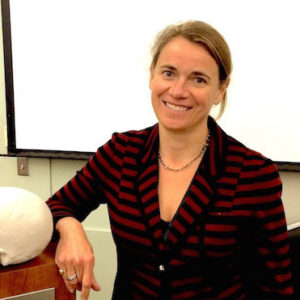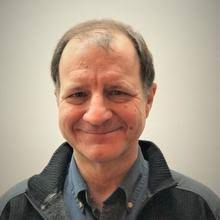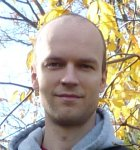CNF Imaging Workshop
Contents
Overview
The CNF Imaging Workshop is designed to bring together the top experts of Imaging from Harvard Medical School to address new ways and methods of Imaging. This will be a highly interactive workshop as participants will transfer technology and know-how from the medical imaging community to basic physics in this case nuclear femtography.
The workshop will include presentations and demonstrations from several professors. Dr. Ron Kikinis will address historic perspective, lessons learned at Harvard Medical School for serving the Medical Image Community for over 25 years. Dr. Steve Pieper will talk about the recent software design for 3D Slicer, an imaging tool. Dr. Tina Kapur will talk about building a community around the ecosystem that you manage to create and transfer technology to industry. Dr. Andrey Fedorov will address developer's issues, and Dr. Alexandra Golby both a Physicist and Neurosurgeon will talk about the role of imaging in Image Guided Neurosurgery.
Presenters
Dr. Ron Kikinis
Dr. Ron Kikinis is the founding Director of the Surgical Planning Laboratory, Department of Radiology, Brigham and Women's Hospital, Harvard Medical School, Boston, MA, and a Professor of Radiology at Harvard Medical School. This laboratory was founded in 1990. Before joining Brigham & Women's Hospital in 1988, he trained as a resident in radiology at the University Hospital in Zurich, and as a researcher in computer vision at the ETH in Zurich, Switzerland. He received his M.D. degree from the University of Zurich, Switzerland, in 1982. In 2004 he was appointed Professor of Radiology at Harvard Medical School. In 2009 he was the inaugural recipient of the MICCAI Society "Enduring Impact Award". On February 24, 2010 he was appointed the Robert Greenes Distinguished Director of Biomedical Informatics in the Department of Radiology at Brigham and Women's Hospital. On January 1, 2014, he was appointed "Institutsleiter" of Fraunhofer MEVIS and Professor of Medical Image Computing at the University of Bremen. Since then he is commuting every two months between Bremen and Boston. During the mid-80's, Dr. Kikinis developed a scientific interest in image processing algorithms and their use for extracting relevant information from medical imaging data. Since then, this topic has matured from a fairly exotic topic to a field of science. This is due to the explosive increase of both the quantity and complexity of imaging data. Dr. Kikinis has led and has participated in research in different areas of science. His activities include technological research (segmentation, registration, visualization, high performance computing), software system development, and biomedical research in a variety of biomedical specialties. The majority of his research is interdisciplinary in nature and is conducted by multidisciplinary teams. The results of his research have been reported in a variety of peer-reviewed journal articles. He is an author and co-author of over 300 peer-reviewed articles. As part of his service to the community, he serves as reviewer for a large number of journals and conferences from the fields of imaging, biomedical engineering and, computer science. He has served and is serving as member of external advisory boards for a variety of centers and research efforts. He is the Principal Investigator of 3D Slicer, a free open source software platform for image analysis and visualization. Over the years Dr. Kikinis has served as the Principal Investigator(PI) and site PI of a number of large and small NIH and NSF funded grants (see here for his NIH funding). This includes the National Alliance for Medical Image Computing (NA-MIC). He is currently serving as the PI of the Neuroimaging Analysis Center (NAC) and the Quantitative Image Informatics for Cancer Research (QIICR). He is also the Director of Collaborations for the National Center for Image Guided Therapy (NCIGT).
Dr. Alexandra Golby
Dr. Golby's research focuses on the translation of a broad range of neuroimaging techniques to neurosurgical planning and intraoperative guidance. The overarching goal of this work is to help surgeons perform optimal brain surgery by defining and visualizing critical brain structures and pathologic tissue to be removed. Since 1998, she has worked on the development and validation of fMRI for the pre-operative evaluation of patients with lesions in and near critical areas of the brain. This has been a translational research effort which adapted fMRI, initially developed as a neuroscience technique to be applied in groups of subjects to make statistical inferences about populations, to the vastly different scenario of clinical decision-making for individual patients. Since her research program began at BWH in 2003,Dr. Alexandra Golby's group has developed new techniques for the use of fMRI in single subject analyses necessary for surgical planning. In addition, they have developed numerous acquisition strategies geared towards accommodating the limited neurologic functions of some patients as well as analytic approaches to maximize the utility of fMRI for surgical planning. Presurgical fMRI has the potential to bring meaningful pre-operative individualized functional anatomy mapping to neurosurgeons around the world as an alternative to awake mapping, a technique which is demanding and remains limited to very specialized centers. Dr. Alexandra Golby has also worked extensively on the translation of diffusion MRI (dMRI) including tensor imaging (DTI) to map white matter anatomy in neurosurgical patients. Diffusion MRI allows the in vivo depiction of the location, course and integrity of macroscopic white matter tracts in the brain through a process known as tractography. As with fMRI, the translation of this technology to clinical decision-making has required numerous fundamentally novel approaches. Her group has developed segmentation approaches for defining tracts based on high dimensional clustering as well as statistical atlases which allow labeling of individual patient tracts even in the setting of mass effect and peritumoral edema. Her group works collaboratively with MRI physics and MRI analysis groups to continue to be at the forefront of technical innovation. They have released many of our tools to the public via 3D Slicer (slicer.org) and have organized several international challenge workshops to apply diffusion techniques to real world clinical data. With both these methods, translation of the technology required understanding of clinical needs, constraints, and opportunities for improved clinical care. Specific analysis techniques needed to be developed to adopt these techniques so that they were applicable to single subject data, and, in particular, to neurologic patients who have structural lesions and often are limited by their neurological deficits. In these efforts, they work closely and collaboratively with scientists in radiology and computer science to translate emerging technical innovations into the operating room. Another major area of translational investigation is in the development of intraoperative imaging techniques. Dr. Golby was the lead surgeon in developing the AMIGO (Advanced Multi-modality Image-Guided Operating Suite) at BWH and serve as the Co-director of AMIGO. AMIGO is one of the key resources of the National Center for Image Guided Therapy funded by NIH. This suite contains all contemporary imaging methods within an operating room environment and was specifically designed to support translational research. The suite is the site of many of surgical procedures in which we are developing strategies for intraoperative imaging and guidance. Several of her group's important research efforts are built on the AMIGO platform. These include the intra-operative use of high field MRI including development of intra-operative dMRI tractography. They have also leveraged the resources of the AMIGO suite to develop novel strategies to simplify intraoperative imaging using techniques such as ultrasound and stereovision to give surgeons information in near real time to guide surgery. Another area of research leveraging the resources of AMIGO is the development of tissue level molecular imaging. Dr. Alexandra Golby's group has funded collaborative projects using mass spectrometry, Raman spectroscopy, and fluorescence imaging. Their eventual goal is to give surgeons in most settings tools that will help them to perform safer and more effective surgery.
Mr. James Cheng
James Su-Ting Cheng (MBA ’87), an angel investor and entrepreneur with more than 20 years of experience in information technology and government contracting, has adopted another title according to his LinkedIn profile: Chief Balancing Officer. Cheng and his wife, Jeanette Wang, are raising their first child, 3-year-old Joshua. In addition to fatherhood, Cheng juggles five part-time jobs, ranging from advisor to investor to adjunct professor. He is very fortunate to not have just one job. From 2010 until 2014, Cheng worked as Virginia’s secretary of commerce and trade, managing 13 agencies, including economic development, export, tourism, small business, housing, mining and energy. Cheng never imagined he would go into politics as a computer science major from Old Dominion University. He was always a tech guy, and after graduation, he joined his father’s company. In 1994, Mr. Cheng decided to create his own firm. Cheng grew Computer & Hi-tech Management Inc. from five employees to 550 employees, with annual revenues skyrocketing from $300,000 to $90 million by the time he sold it 11 years later. The key to entrepreneurship, as Cheng tells his students, is to solve a pain point. “It might be something they don’t even know exists,” he said. As technology advances, Cheng is confident that it will enable all of us to achieve more balance in our lives. He is always looking for the next greatest thing, and “Balance is it.” Cheng says the skills he gained at the University of Virginia Darden School of Business have been the cornerstone of his success, so it only seemed right to him to create the $1 million James Su-Ting and Jeannette Wang Cheng Scholarship Fund to support students from East Asia. A Principal Donor who served on the Darden School Foundation Board of Trustees from 2008 until the summer of 2015, Cheng lives in Charlottesville with his wife and son. He is currently working on a new angel fund for University of Virginia alumni called CAV Angels.
Dr. Tina Kapur
Dr. Kapur’s research interests and accomplishments are in the area of medical image computing and computer aided interventions in image-guided neurosurgery, surgical navigation, and MR-guided pelvic brachytherapy. She has numerous publications in medical image segmentation, and is the holder of several issued US and international patents in the field of surgical navigation. She leads national and international outreach and collaboration efforts for image-guided therapy and is particularly interested in fostering collaborations between efforts in open science to accelerate important discoveries that improve health and save lives. She is the founding director for the first open-science hackathons for medical image computing, "NA-MIC Project Week", which began in 2005, and has been running continuously (twice a year) since then. She received her Ph.D. in Electrical Engineering and Computer Science from the Massachusetts Institute of Technology in 1999. She was the Chief Scientist at a Boston area surgical navigation company, Visualization Technology Inc., and upon its acquisition by GE Healthcare, the Chief Scientist at the GE Navigation.
Dr. Steve Pieper
Dr. Steve Pieper is a Computer Scientist with a long-time interest in applying Computer Graphics to problems in Medical Imaging, Surgical Planning, and Biomechanical Simulation expressed through entrepreneurship and academic research. He received his Computer Science degree from UC Berkeley and M.S. and Ph.D. from the MIT Media Lab. At the SPL, Steve is the Engineering Core PI on the Neuroimage Analysis Center. He is also responsible for application engineering and dissemination activities in the National Alliance for Medical Image Computing. He has also taken on responsibility for the ongoing architectural development and maintenance of the 3D Slicer, the SPL's flagship software system. Currently, Steve is actively working on Version 4 of 3D Slicer (Slicer4). Steve is active in a variety of research collaborations related to software development, surgical applications, high performance computing, facial animation, haptics, registration and segmentation. His thesis topic is Computer-Aided Plastic Surgery. He is a Faculty in Engineering at Dartmouth College and an adjunct teacher of Computer Science and Computer Graphics at Berkeley and MIT. Dr. Pieper is the founder, former President, CTO and Board Member at Medical Media Systems. He is the current founder and CEO of Isomics,Inc. He has Eight+ issued US Patents and has managed medical software from development through FDA clearance to reimbursement and clinical acceptance.
Dr. Andrey Fedorov
Dr. Andrey Fedorov is an Assistant Professor in Radiology at the Surgical Planning Laboratory (SPL), Department of Radiology, Brigham and Women's Hospital and Harvard Medical School. Andrey joined SPL in 2009 after obtaining his PhD in Computer Science from The College of William and Mary in Virginia. His research is in translation and validation of medical image computing technology in clinical research applications, with the focus on quantitative imaging, imaging informatics and image-guided interventional procedures. Andrey is committed to advancing the role of reproducible science, data sharing and open source software in academic research. He has contributed to a number of open source projects, most notably 3D Slicer (http://slicer.org). Together with Ron Kikinis, he is a co-PI of the Quantitative Image Informatics for Cancer Research (QIICR) project (http://qiicr.org) focused on developing open source informatics technology in support of quantitative imaging biomarker development, and interoperable sharing of the imaging biomarker data using the Digital Imaging and Communications in Medicine
Schedule
August 18:
- Arrival to Williamsburg
- There is a direct flight from Boston to Richmond
August 19:
- Drive to JLAB -- 30 minutes from Williamsburg
- Start at 9:30AM
- End at 3:30PM
August 20:
- Join breakfast for informal interactions with HMS/JLAB/Nikos' group
- Drive to JLAB
- Morning session 10:30AM to 12:00PM
- Lunch break 12:00 to 1:30 --an opportunity for interactions
- Afternoon session 1:30PM to 3:30PM (local JLAB activities on Imaging, local potential opportunities for transfer of technology)






